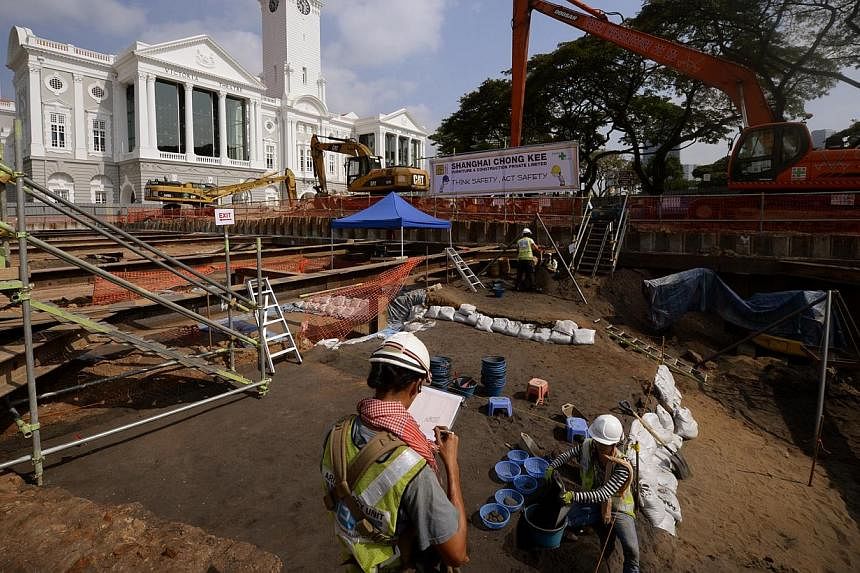The old shoreline of Temasek, stretching from Empress Place to Beach Road, is a treasure trove of 700-year-old artefacts once owned by ancient inhabitants of the island we now know as Singapore.
An archaeological dig - the largest since such excavations started in the 1980s - is now under way at Empress Place.
Among the things uncovered so far: A headless porcelain Buddhist figurine, red-orange coloured carnelian beads from India and a broken celadon bowl with a double-fish motif.
They form part of a 400kg haul dug up by archaeologists from the archaeology unit of the Nalanda-Sriwijaya Centre of the Institute of Southeast Asian Studies (Iseas) since the dig started on Feb 2.
These finds are significant, said lead archaeologist Lim Chen Sian, as they help paint a more detailed picture of the Temasek period (1300s to 1600s), of which there are no text records.
"If we find more Buddhist figurines, we may be able to suggest that Buddhism could possibly be one of the religions practised in ancient Singapura," said Mr Lim, 40.
The media was given a preview of the excavation in front of Victoria Theatre and Victoria Concert Hall yesterday. Costing $70,000, the operation spans 1,000 sq m, or roughly the size of 10 four-room HDB flats.
The Urban Redevelopment Authority, which is developing an integrated arts, culture and lifestyle precinct there, gave project organiser, the National Heritage Board (NHB), the nod to conduct the dig before works to pedestrianise the area start later this year.
The area around Empress Place is historically and archaeologically significant, said NHB's group director of policy, Mr Alvin Tan.
For one thing, it is located near the once-thriving port along the Singapore River. It is also ensconced near other historic sites such as Fort Canning and Parliament House - all of which have thrown up archaeological gems.
Mr Tan believes the project can help "strengthen Singaporeans' understanding of the country's pre-colonial past".
Other highlights unearthed include a broken clay figurine in the shape of a bird, Song and Yuan dynasty Chinese coins, and the base of a flower vase or spittoon.
The four-man-strong archaeological team also found a colonial sewage pipe which used to discharge into the Singapore River.
A preliminary report of the discoveries will be provided to NHB after the project ends on April 9.
Mr Lim said it could take years thereafter to clean, sort, catalogue and analyse the finds. He expects the site to produce about three tonnes of artefacts. The state owns these items as they were found on state land.
Minister for Culture, Community and Youth Lawrence Wong, who visited the site yesterday, said he is encouraged by the growing interest in Singapore's history and heritage.
"This (dig) is timely as we celebrate our golden jubilee, and crucial as we continue in our journey as a nation," he said.



